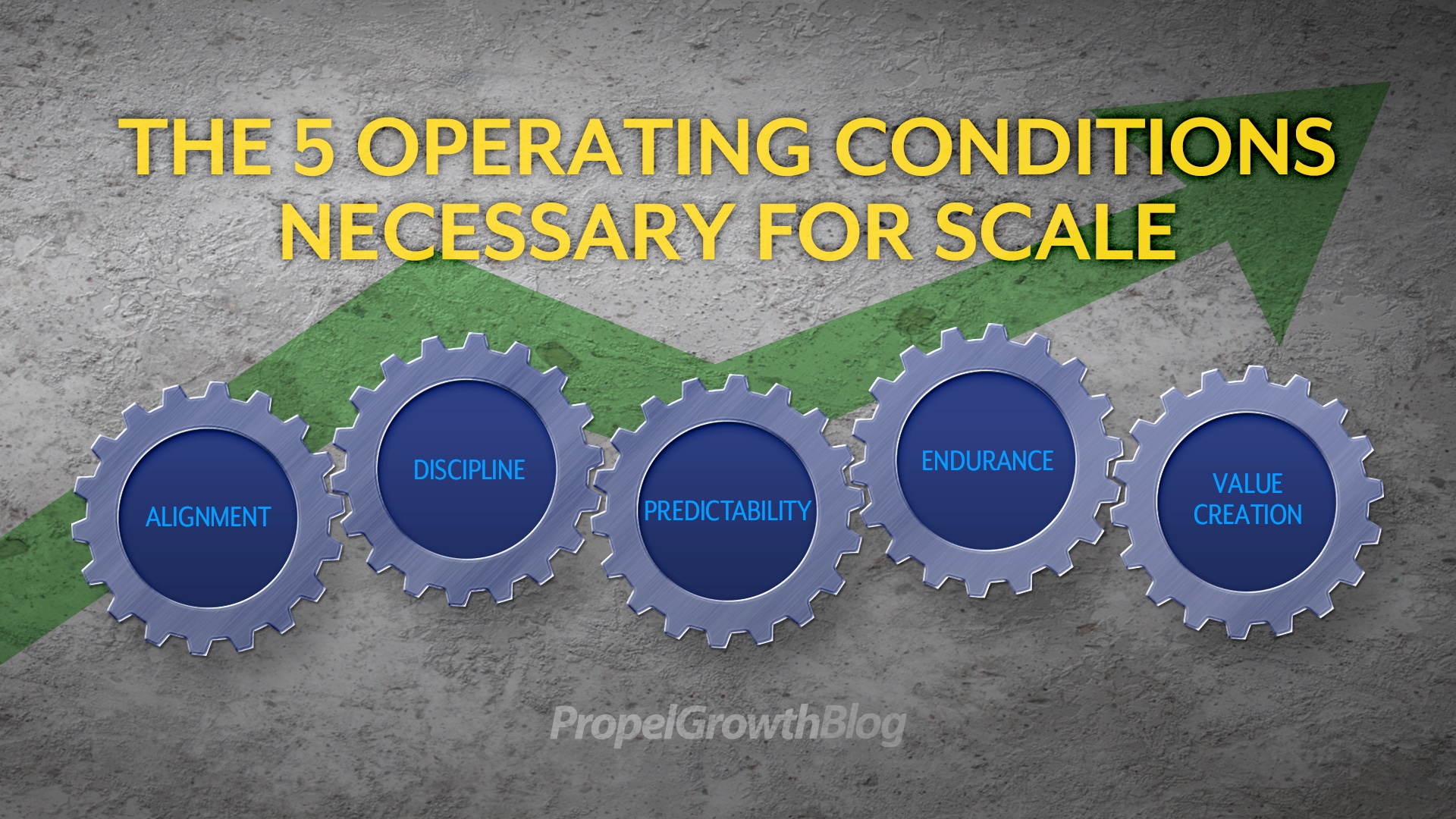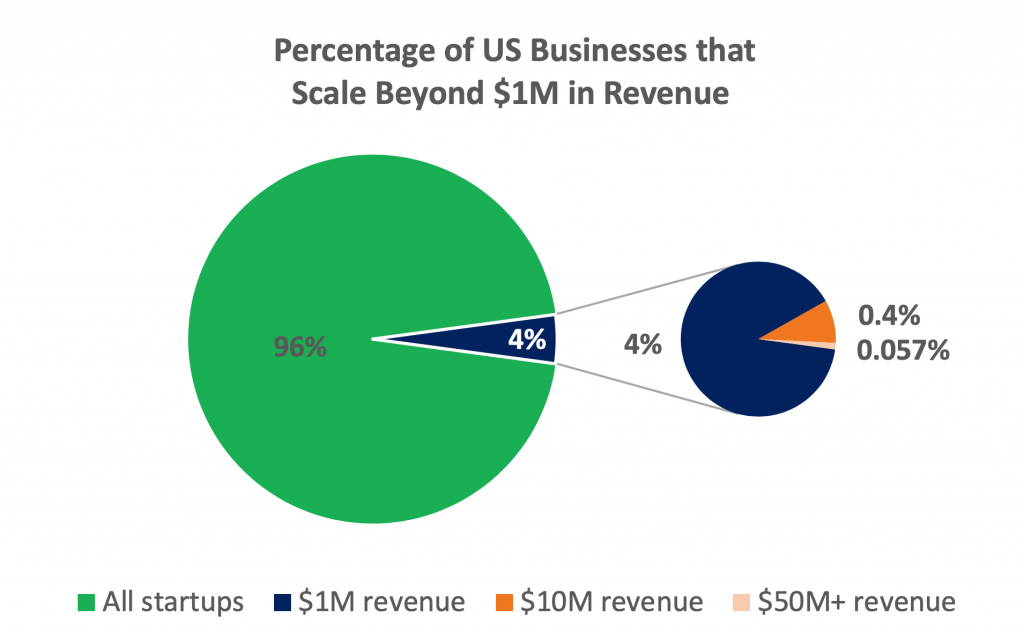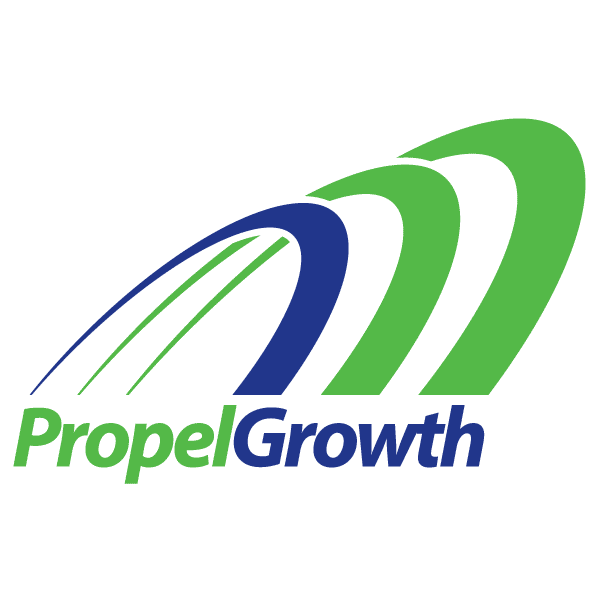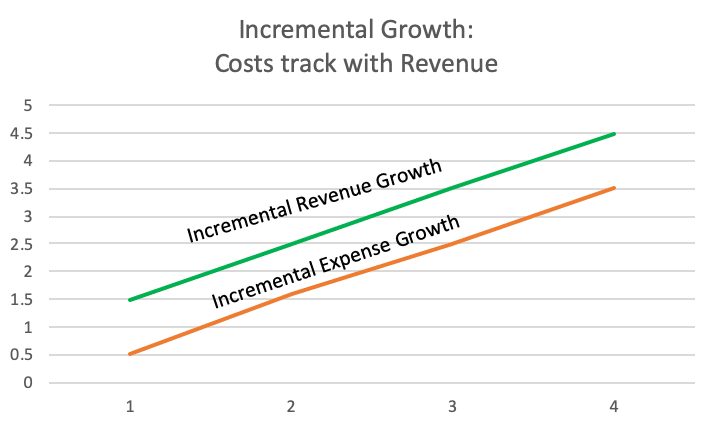
Small business is often touted as the primary engine of job creation. But in reality, it’s not startups that contribute to stable jobs. It’s companies that reach the mid-market level of $10-50M in revenue. However, only 0.4% of businesses in the US ever reach that stage. Millions of firms get stuck at around $1-2M in revenue.
Is your business stuck? Are you having difficulty figuring out how to make it scale and reach mid-market stability?
Here are some sobering statistics: Only 4% of all business started in the US ever reach $1M in revenue. Of those, only 10% will ever reach $10M. And only 15% of those firms will reach $50M and above. But there is solid evidence that a business needs to reach the mid market of $10-50M to be truly stable. In addition the best job creators are firms that reach that mid-market level.

So how do you take off the brakes and foster 10x or 20x growth to build a mid-market business?
There’s a difference between growth and scale
Incremental growth should not be the goal for most business owners, as that doesn’t really create wealth. Instead, SCALE should be the goal. When you grow incrementally, your revenue growth is generally accompanied by a similar growth in expenses. In contrast, scale allows revenue to increase exponentially while expenses grow incrementally. This is how a business creates wealth, increases employee incomes, and invests in future growth.
So how do you enable a business to scale?
This week, Charles Fred and TrueSpace, in partnership with Gallup, released groundbreaking research on what it takes to successfully scale a business into the mid-market.
In 2014, TrueSpace launched a 4-year study to figure out what conditions enable a company to successfully grow. They hand-picked 150 companies that had annual revenues between $1 and $2M and were more than 3 years old. All of the 150 planned to scale to $10M in the next 5 years. The researchers did extensive interviews with the companies, their key customers, and employees. They dug into the companies’ data to analyze trends and forecasts. They looked at the procedural, structural and cultural factors in place at each firm.
During the four years, only 14 of the 150 made it to $10M. Note how this aligns with the stats I mentioned at the beginning of this article. The vast majority remained below $3M in annual revenue. So the researchers examined the difference between the 14 and the remaining 133 (3 of the firms failed and went out of business during the study). They identified significant differences in operating conditions between the two groups. And from this, they established a framework of five operating conditions that are necessary for scaling a business.
Then TrueSpace partnered with Gallup to test the framework using a quantitative study with nearly 2500 entrepreneurs. This broader research confirmed the conclusions of the qualitative study.
“This research, and the Five Conditions Assessment can provide an entrepreneur with a scientific approach to scaling their firm,” said Charles Fred, TrueSpace CEO and co-founder. “We believe the data will influence entrepreneurs and investors to see the potential in businesses once perceived as stuck.”
If you’re looking to jumpstart your business and allow it to scale, consider implementing these 5 Operating Conditions Necessary for Scale: Alignment, Discipline, Predictability, Endurance and Value Creation. I’ll dig deeper into these below.
Alignment of Focus, Mission, Structure
Alignment asks, “Is the business growth-capable?”
In my work with small businesses, I often see them chase any new source of revenue. They fear the idea of focusing on a narrow niche, because it might result in missed revenue opportunities. But this sort of unfocused process actually inhibits growth.
The alignment condition starts with focus. You focus on a specific market, develop a unique point of view on that market, chase a specific target customer with a consistent set of needs, and attract talent that has the specific skills to meet those needs.
Businesses that successfully scale are highly effective at aligning their finite resources of time, talent and capital to focus on a clearly defined market segment. This positions your firm to win a higher percentage of deals.
Another aspect of alignment is whether or not your firm has a distinct and compelling point of view on the market. Having a distinct point of view allows you to differentiate. It sets you apart. It’s something that is recognized by your target market, your competition, and the talent pool.
Alignment includes your effectiveness in recruiting and developing talent with skills and expertise valued by your target market. It also measures on how well you establish a culture of high performance in your organization.
And finally, Alignment measures whether or not your firm has a clear plan for the timing of important milestones. For example, you need a plan for when you will be seeking new rounds of funding, when you’ll make strategic investments or acquisitions, and when the founders will step down and potentially exit the business. Tie these goals to clear and specific milestones. The clearer that plan, the more likely you are to achieve it.
Establishing the Discipline Necessary for Scale
Discipline asks, “Can the business scale?”
The Discipline condition addresses your business’ efforts to identify and track key performance indicators (KPIs) and establish a culture of continual improvement. TrueSpace’s research found that this is a key condition for moving from linear growth to true scale. It also bolsters your organization’s resilience and establishes a groundwork for consistent growth.
The discipline necessary for scale includes tracking, monitoring and assessing a range of KPIs. The companies that successfully scale aren’t perfect at achieving their expectations. They use the performance metrics to give feedback necessary for improvement. Scaling organizations are learning organizations.
Discipline also includes establishing clear performance expectations for employees. Once you have the expectations documented, determine metrics to measure, and tie the metrics to compensation and other incentives. That way employees clearly understand what’s expected of them. This makes it easier for them to meet and exceed those expectations. This is particularly important for new employees, as it helps them hit the ground with a running start.
Having formal rules and expectations to safeguard workers and assets, secure data and prevent harassment is another key aspect of discipline.
Learn more about Charles Fred’s groundbreaking research in this New York Times article.
Predictability is the Fulcrum for Scale
Predictability asks the question, “Are the decision-makers continuously learning?”
The best predictor for whether a company is going to scale is not how fast it grew in the past. It’s how consistently the business has grown year over year. Consistent growth demonstrates that your company has learned how to use data and feedback to set realistic goals. It also demonstrates that you have less uncertainty about meeting those goals.
One of the biggest keys to consistent growth is effective management of the sales pipeline and forecasting. If you can accurately forecast revenue and understand sources of new customers, then you’ll know where to invest to increase revenue.
Using that data effectively also allows you to identify and anticipate problems in advance. But this requires a culture of honesty, acceptance, and willingness to learn from mistakes.
Endurance for the Growth Journey
Endurance asks the question “Can employees and stakeholders endure the journey?”
It takes the typical startup more than 10 years to reach the mid market. Some take far longer. But often, the startup culture is one of sprinting instead of running a marathon. The journey requires and emotional commitment from everyone on the team. It can often be an up-and-down road that has an effect on confidence, mental health and physical wellbeing.
The TrueSpace research identified employee programs help build endurance: benefits programs, employee recognition, investment in learning and development, and community events.
Again, clear performance expectations and metrics tied to compensation also help improve endurance.
Confidence in the leadership team plays a huge role in endurance. When employees are confident that their leaders are capable of handling uncertainty, they have more confidence that the company will meet its forecasts. And that confidence positively affects their individual and team performance.
Value Creation
Value Creation asks “Is growth creating enterprise value?”
Few entrepreneurs understand the real value of their business. They find out when they go for an investment or try to sell the company. Often, the valuation is not as high as they expected, but by then, it’s too late to change the outcome.
Enterprise value is primarily driven by year-over-year revenue growth, free cash flow, EBITDA, and headcount. Of course, tangible and intangible assets play a role, but their value is often influenced by revenue and free cash flow.
Companies that have the first four operating conditions well in hand are able to achieve predictable growth. These are the firms creating enterprise value. This links back to the Alignment condition of having clear milestones. The more enterprise value you have, the easier it will be to raise investment capital, make acquisitions and eventually exit the business.
How To Apply This to Scale Up Your Business
If you want to learn how to apply these operating conditions to your business, check out the research from TrueSpace. You can register for a free copy here. Also, TrueSpace offers an assessment to benchmark your firm based on the 5 conditions. They also offer a 2-day workshop to help business owners and executives apply the 5 operating conditions to your business.
On February 26, 2020, I’m hosting a full day of panels and fireside chats focused on scaling your business. We’ll kick off the day with a keynote from Charles Fred where he’ll present the research. If you’re located in or near northern Colorado, I highly encourage you to come. The event is free, but seats are limited. You can learn more and register here.
For more information about the TrueSpace research, check out these articles:
PropelGrowth: ScalingUp Program for Small Businesses in FoCo
NY Times: A Formula for Growth After the Startup Stage
Gallup: How Do Post-Startup Companies Become Long-Term Job Creators?
Inc. Magazine: Is Your Company Stuck After the Startup Stage? Here Are 5 Ways to Kickstart Growth, According to a New Report
- 4 Steps to Optimize Your LinkedIn Profile for Sales Prospecting – February 12, 2021
- The Reality of Cold Calling for B2B Sales – January 11, 2021
- Can Inbound Marketing Generate Enough Leads? – January 9, 2021








